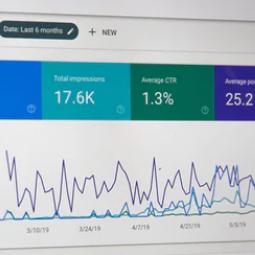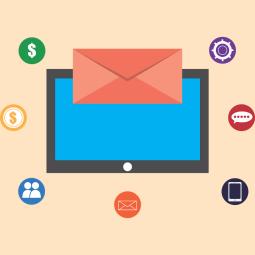The digital marketing domain covers all aspects of promoting your organisation and fundraising online.
It includes:
- Websites – how to take control of your online presence and how to create and manage your website.
- Email marketing – how to use and track EDMs (electronic direct mails) and wrap this into your marketing and content strategy.
- Social media – create a strategy, build a community and leverage your platforms for campaigns.
- Digital Fundraising – use digital technologies to increase your donations and access grants.
- Event management – streamline your events advertising, communication with attendees and payments.
We’ve summarised our not-for-profit digital capability levels and requirements in the table below so you can understand what we recommend to progress through the levels.
Digital marketing maturity model
| Challenged | Basic | Intermediate | Advanced | |
|---|---|---|---|---|
| Websites |
No online presence, or an outdated website, that is not maintained. |
A very simple, optimised and mobile friendly website. |
A responsive & engaging website that plays a critical role in speaking with supporters and clients. The not-for-profit Google Ad Grant promotes your work. |
Actively monitor website engagement and refine content to improve engagement and search rankings. You appear on the first page of relevant search results. |
| Email marketing | An electronic newsletter is sent to subscribers on a semi-regular basis. | Email marketing is planned and aligns with your communication plan. To improve your email graphics and send rates, you use an EDM tool such as MailChimp, Campaign Monitor or similar. |
Identified the purpose of your email marketing efforts, and now ready to capitalise and optimise. Email marketing is planned and aligns to your digital marketing strategy. |
Communications are planned and integrated. User engagement and content is tracked to prioritise content development and engage more effectively with your supporters. |
| Social media | Use one or two social media platforms, but often find it difficult to post engaging content regularly. | One or two social media platforms, and a social media scheduling calendar to regularly post engaging content which is shared and liked by a good number of people. |
Social media content is driven by a social media strategy and is integrated into your email, website and advertising campaigns. Automated scheduling tools are used to support engagement. |
Engage with large, active online communities through social media who actively and measurably help you achieve your mission. |
| Digital Fundraising |
Accept donations and track current and prospective donors through a spreadsheet. |
1-2 fundraising campaigns a year are supported by a fundraising platform connected to your website. These systems support and manage your payments. |
Processes in place to foster potential donors and leverage multiple social media platforms as well as email to strengthen your donor pipeline through fundraising systems. |
Use a system, such as a CRM, to track contacts and engagement across multiple platforms. A large group of donors support regularly and you understand them well and know how to expand your reach. |
| Event Management | Run some events and may use Facebook along with some manual processes to manage bookings. | Run in-person and online events to share your mission and engage supporters. Marketing tools are utilised to advertise and communicate online and take bookings via an event booking system. |
Events align to your digital marketing strategy, and you effectively manage the advertising, communications, tickets, payments, reporting and analytics. |
Use a system, such as a CRM, to manage events effectively, including advertising, communicating, tickets and payments, you connect data with other systems. |





Status message
Thanks for rating this guide.